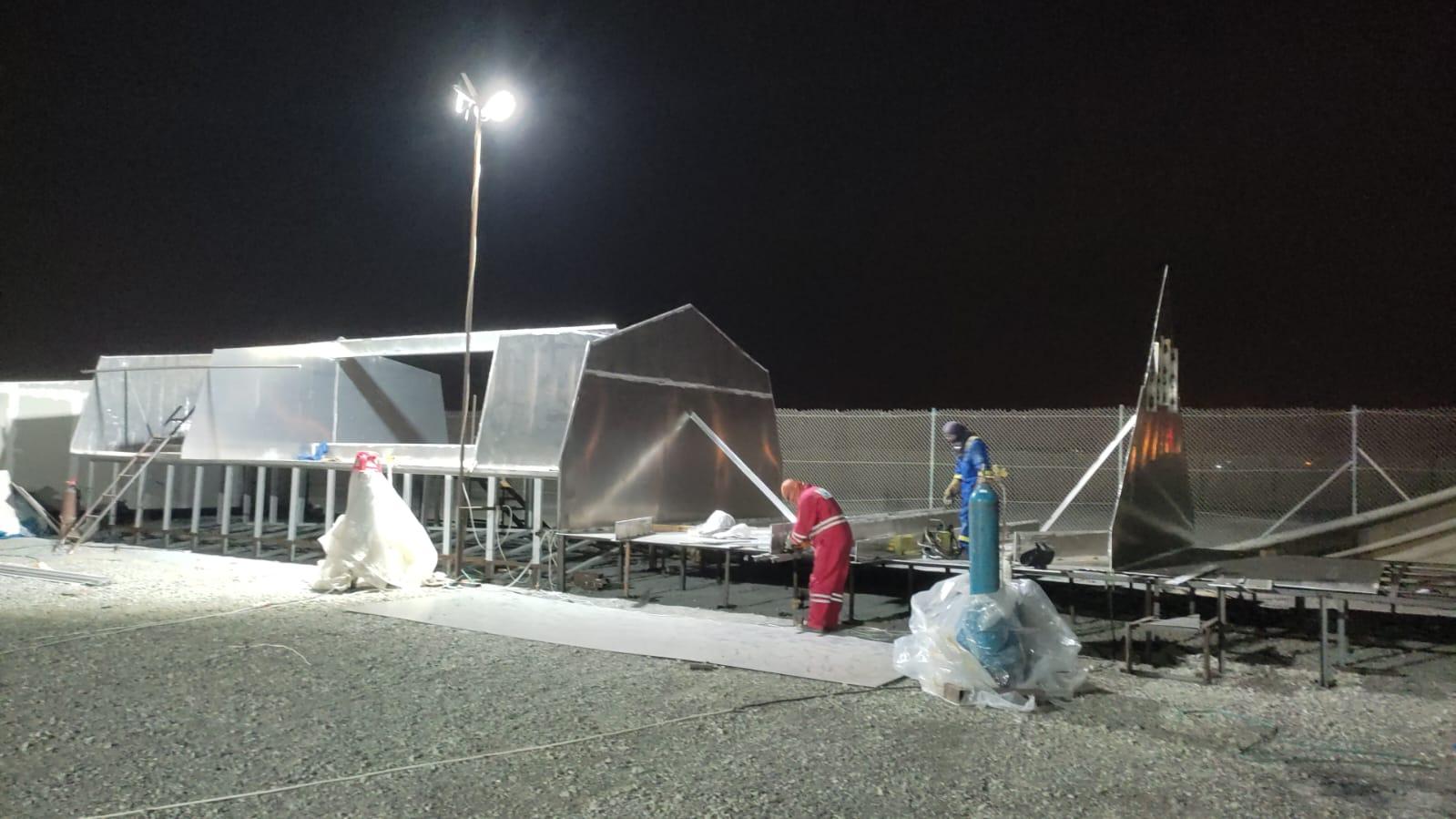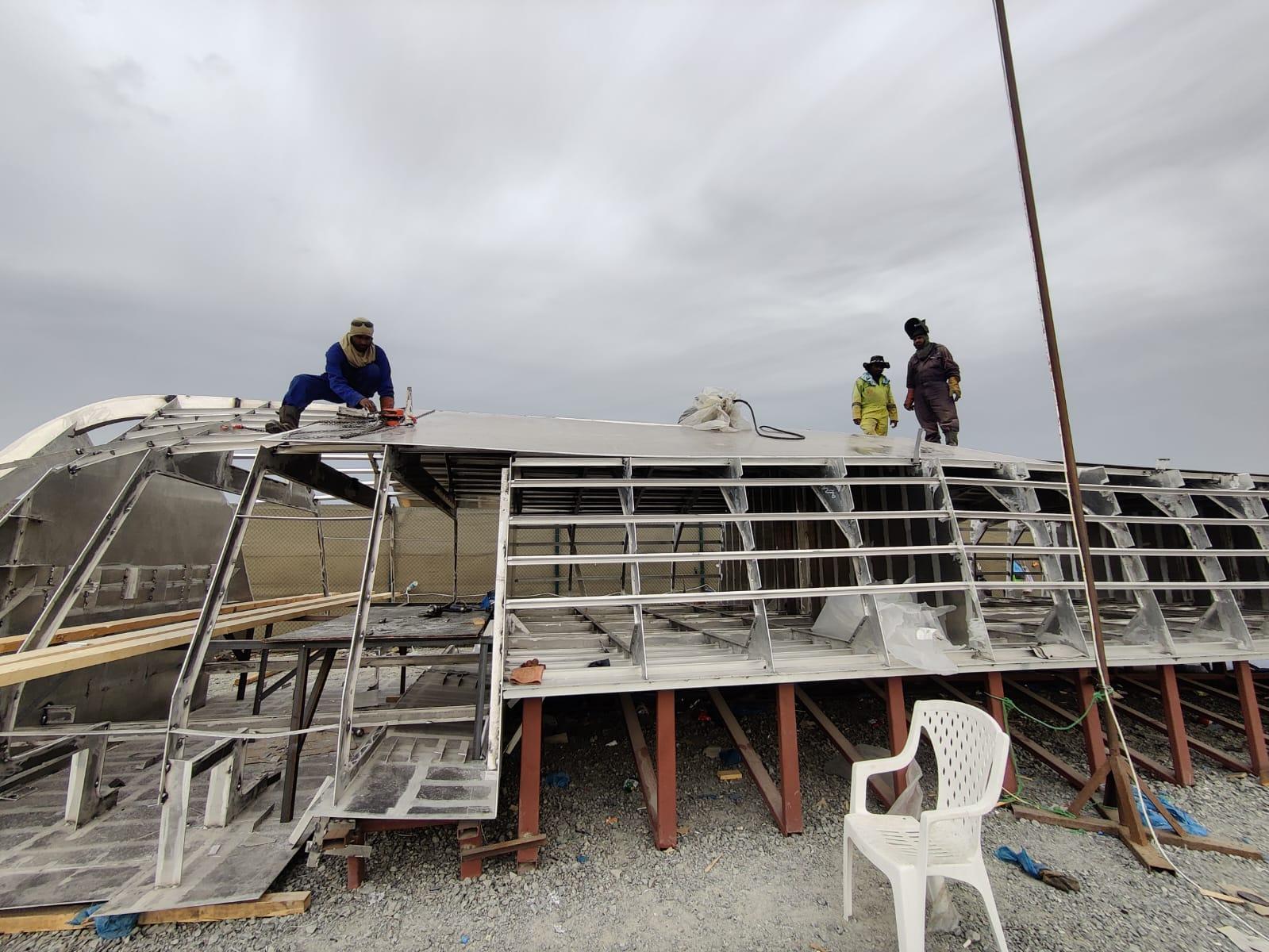From Blueprints to Launch: How Ship Manufacturing Companies Deliver

Introduction: Building a Ship Is More Than Welding Steel
Building a ship isn’t just engineering, it’s orchestration. Hundreds of people, thousands of parts, and years of planning go into launching a single vessel. From a blank sheet to sea trials, each phase demands precision, expertise, and coordination.
So how do ship manufacturing companies actually deliver on such complex projects? How does an idea in a naval architect’s sketchbook become a fully certified vessel ready to face open waters?
In this deep dive, we explore the full lifecycle of modern shipbuilding, what happens behind the scenes, what clients should know, and how the best shipbuilding companies in UAE and beyond are delivering faster, smarter, and more sustainably than ever before.
The Big Picture: The Phases of Modern Shipbuilding
While each build is unique, the process generally follows these key stages:
-
Concept & Feasibility
-
Design & Engineering
-
Procurement & Pre-Fabrication
-
Construction & Assembly
-
Testing & Commissioning
-
Launch & Delivery
-
Post-Delivery Support
Let’s explore each of these stages in detail, because understanding them means knowing what to expect, what questions to ask, and what sets top shipbuilders apart.
1. Concept & Feasibility: Where It All Begins
Before anything is cut or welded, there's the idea.
This early stage involves:
-
Defining the ship’s purpose (cargo, patrol, ferry, OSV, etc.)
-
Outlining performance requirements (speed, range, capacity)
-
Considering environmental conditions (e.g., Gulf waters vs. Arctic)
-
Estimating costs and timelines
Top-tier ship building companies in UAE, for instance, often work closely with regional clients in offshore energy or defense, tailoring early-stage concepts to Gulf-specific operating demands—think shallow drafts, heat-resistant systems, or high-speed hulls for patrol boats.
This phase sets the tone for everything that follows.
2. Design & Engineering: Turning Ideas Into Blueprints
Once feasibility is green-lit, the technical work begins.
Modern design isn’t just paper and pencils. Shipyards now use:
-
3D CAD software for structural modeling
-
Digital twins for real-time system simulation
-
Hydrodynamic analysis to optimize hull performance
-
Classification society input to ensure compliance from day one
Great builders treat this phase as collaborative, not transactional. Naval architects, engineers, clients, and regulators all sit at the table to ensure the design is both visionary and viable.
This stage is where marine service providers in UAE often add value, advising on propulsion needs, green compliance, and in-region navigation challenges.
3. Procurement & Pre-Fabrication: Getting the Puzzle Pieces
Once the design is finalized and class-approved, shipyards move into procurement.
This includes:
-
Engines and propulsion systems
-
Steel or aluminum plates
-
Navigation and communication systems
-
HVAC, fuel, ballast, and fire safety systems
Reliable shipbuilding companies in UAE often maintain strong supplier relationships to navigate the global supply chain efficiently especially important post-pandemic, when engine delays and component shortages disrupted timelines worldwide.
In parallel, fabrication begins. Plates are cut, modules are pre-built, and assembly planning begins. This modular approach, building parts off-site or in parallel is key to speeding up final construction.
4. Construction & Assembly: The Heart of the Operation
This is where sparks fly, literally.
The ship’s keel is laid, blocks are assembled, and systems are installed. Modern yards use robotic welding, CNC cutting, and real-time quality control systems to boost efficiency and precision.
The shipyard buzzes with:
-
Cranes hoisting giant modules
-
Engineers wiring internal systems
-
Teams fitting out interiors and machinery
-
Class inspectors checking off milestones
Many ship manufacturing companies in UAE operate leaner, modular construction lines, reducing build time significantly compared to traditional linear models used in older global yards.
5. Testing & Commissioning: Proving It Works
Before a ship ever touches water, it’s tested, relentlessly.
This includes:
-
Static load tests
-
Engine run-ups and fuel system checks
-
Power distribution testing
-
Navigation and communication calibration
-
Emergency systems simulation (fire, flooding, etc.)
Then come harbor trials, dockside runs to test propulsion, maneuvering, and onboard systems in controlled conditions.
Yards that cut corners here pay for it later. Top-tier builders treat commissioning like a second build phase, because that’s what ensures safety, compliance, and long-term reliability.
6. Launch & Delivery: From Drydock to Open Waters
Finally, the vessel is launched. Depending on the ship size, this may be:
-
Side launch (for smaller boats)
-
Slipway launch (gravity-based for mid-size vessels)
-
Floating dock transfer (for large or heavy ships)
After launch, sea trials begin. This is where everything is tested in real-world conditions speed, stability, handling, redundancy systems. Class societies attend. So do clients. It’s the final checkpoint before delivery.
Reliable builders don’t just launch, they deliver vessels that perform exactly as promised.
7. Post-Delivery Support: Where True Builders Shine
A shipbuilder’s job doesn’t end at handover.
In fact, many of the best marine services in UAE provide integrated lifecycle support, including:
-
Warranty servicing and repair
-
Crew training and onboarding
-
Maintenance scheduling tools
-
Software updates for onboard systems
-
Retrofit services for emissions and energy upgrades
Post-delivery support is a huge differentiator. It shows whether a builder is in it for the relationship, or just the contract.
Behind the Scenes: Real-World Observations from UAE Shipyards
Having walked through several Gulf-based shipyards, here are firsthand observations from working alongside ship building companies in UAE:
-
Speed and agility: UAE yards often deliver niche vessels, like patrol boats or workboats, faster than larger global yards.
-
Client access: Builders encourage client visits and walk-throughs, creating transparency at every stage.
-
Green innovation: From hybrid ferries to solar-assist vessels, sustainability isn’t an afterthought, it’s part of the brief.
-
Regional expertise: Understanding of Gulf waters (shallow depth, high salinity, extreme temperatures) is embedded into design DNA.
-
Integration with marine services: Many builders also offer long-term fleet maintenance and refit programs, making them valuable marine service providers in UAE.
FAQs: What Clients Often Ask
Q: How long does it typically take to build a vessel?
A: It depends on size and complexity. A small crew boat might take 6–9 months. A mid-size ferry? Around 12–18 months. Large, custom-built commercial vessels can take 2–3 years.
Q: Can I make design changes mid-build?
A: Yes, but it’s costly if done too late. Good builders offer structured change management processes to minimize disruption.
Q: What’s the best time to visit the shipyard during the build?
A: Most clients visit at least three times, after steel cutting, mid-assembly, and during commissioning. Some UAE yards even offer virtual updates with drone footage.
Q: Are shipbuilding companies in UAE internationally certified?
A: Many are. Top players work closely with DNV, Lloyd’s Register, ABS, and Bureau Veritas for class certification.
Q: Do shipbuilders offer post-delivery support?
A: The best ones do. Look for builders that provide extended warranties, crew training, and lifecycle maintenance.
Comparison Table: Legacy vs. Modern Shipbuilding Models
| Feature | Legacy Shipyards | Modern Shipyards (e.g., UAE) |
|---|---|---|
| Design Approach | Paper-heavy, linear | CAD + digital twins, modular |
| Build Timeline | 24–36 months (average) | 12–24 months with modular tech |
| Client Involvement | Limited to check-ins | Transparent, collaborative |
| Sustainability Focus | Retrofit only | Built-in from day one |
| Regional Adaptation | Generic global specs | Localized designs for Gulf conditions |
| Post-Delivery Support | Minimal | Full lifecycle support + training |
Opinion: The Shipbuilder’s Promise Matters
A shipbuilder’s promise isn’t just about delivery dates, it’s about performance, partnership, and longevity.
From design to launch, every choice they make will shape how your vessel sails, survives, and supports your mission. Whether you’re commissioning a utility boat for oil fields or a custom ferry for passenger routes, choosing the right partner means looking far beyond the price tag.
And increasingly, shipbuilders who combine technical precision, speed, green innovation, and regional understanding, like many shipbuilding companies in UAE, are proving they can compete on the world stage.
So next time you're touring a shipyard or reviewing a proposal, ask yourself: Can this builder not just build a ship, but deliver on a vision?
Final Takeaways
-
Modern shipbuilding is an orchestrated, tech-powered process from blueprint to launch.
-
Design matters. Digital tools and collaborative planning are key to successful delivery.
-
Modular construction speeds up builds and adds flexibility.
-
Green compliance is now built into the process, not added on later.
-
Post-launch support separates short-term contractors from long-term partners.
-
Ship manufacturing companies in UAE are proving their strength through speed, sustainability, and regional expertise.
- Vibnix Blog
- Politics
- News
- Liberia News
- Entertainment
- Technology
- Εκπαίδευση
- Art
- Causes
- Crafts
- Dance
- Drinks
- Film
- Fitness
- Food
- Παιχνίδια
- Gardening
- Health
- Κεντρική Σελίδα
- Literature
- Music
- Networking
- άλλο
- Party
- Religion
- Shopping
- Sports
- Theater
- Wellness




